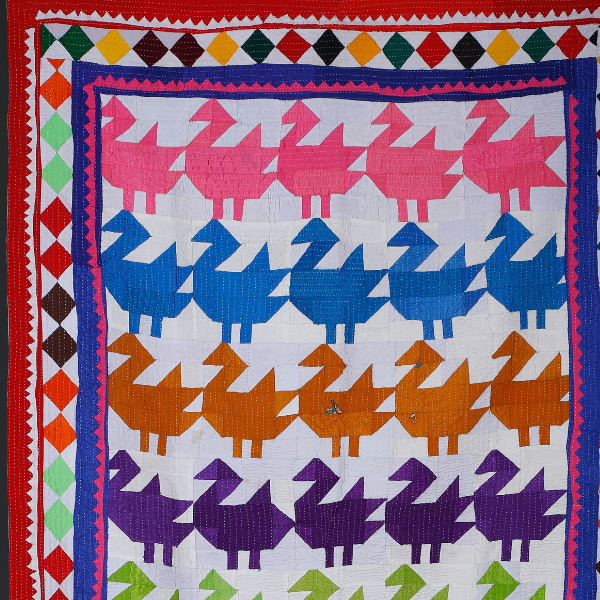
Map Loading...
Kutchi Patchwork Quilt
Kutch
Kutch, a district in Gujarat is home to a wide variety of nomadic and semi-nomadic communities that have settled down over time. These different communities each brought their unique textile designs and techniques. Their proximity to each other encouraged an exchange of stylistic ideas, motifs and techniques and over time there developed a recognisable aesthetic and crafts attributed to the Kutch region. The region boasts a wide range of textile-related crafts from weaving, embroidery, Bandhni, Batis to block printing.
One such exquisite crafts is that of making Patchwork Quilts or “Dhadkis” as known in the local lingo. It is a generational craft that spans over 400 to 500 years, practised by the various communities of Kutch. Functionally, these quilts are used to stay warm during winter in the desert. But, they are also an important part of social life - Newlywed brides are gifted quilts upon their marriage and they are also a symbolic status of the family, a point of pride and heritage.
Quilts were traditionally made by older women who have lost the dexterity and eyesight need for intricate embroideries. In place of embroidery, most of the elaborate designs on the quilts are formed by stitching together pieces of fabric (Patchwork) to make the foundation of the quilt and then by applying shaped fabrics to the foundation ( Applique). This technique is known as Applique and Patchwork.
The material used for applique and patchwork is usually cotton fabric. A base textile for the quilt is created by patching together scraps of fabric in a specific pattern or it can also be a plain fabric based on the requirements. It has to be thinner than the fabric bits used for applique work. After the base work is complete in the next level applique work is carried out. Fabrics are cut into various motifs such as trees, houses, mythological figures and so on. They are then arranged and stitched on the base textile as per the prefered design or scenario to be narrated. After the quilt is neatly mounted with a border, it is complete.
Several of the quilts reuse fabric from worn cotton saris or veils. They are pieced together from what might have been discarded away. In a way, the craft turns scraps of fabric into a valued and reusable resource for making quilts. The patchworked quilt is also synonymous with the various ethnicities of the region that has melded into each other over time. The colourful designs and fabrics come together to create an exquisite quilt, just as the various communities with their unique cultures come together to create an idiosyncratic identity.
Craft
Quilting
Material
Cotton
Technique
Applique, Patchwork
Showcase




